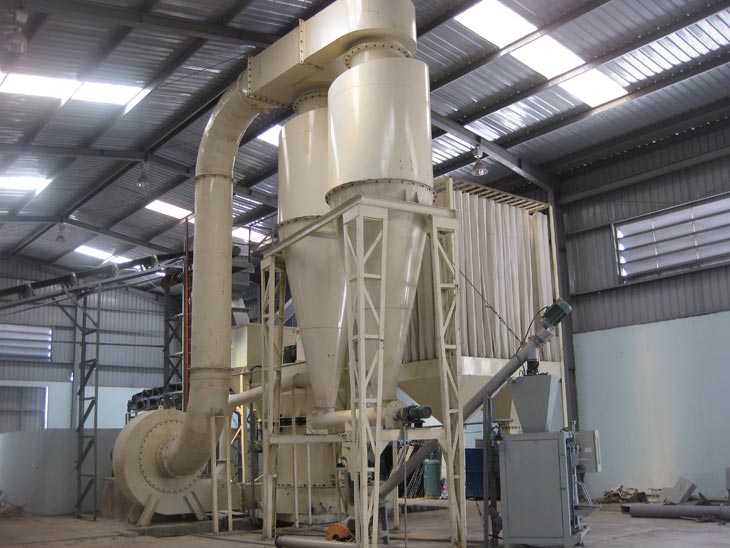
 WhatsApp
WhatsApp [email protected]Get PriceGet Quotation
[email protected]Get PriceGet Quotation
Carbon black is a fine powder that is produced by the incomplete combustion of petroleum products and other fossil fuels. It is commonly used as a black pigment in a variety of applications, including inks, coatings, and rubber products. Grinding carbon black into finer powders can improve its dispersion and tinting strength, making it more useful for a wider range of applications.
Carbon black grinding machines are designed to grind carbon black into finer powders. These machines typically use a combination of mechanical grinding and air classification to achieve the desired level of fineness. Mechanical grinding uses a milling process to crush the carbon black particles into smaller pieces, while air classification separates the finer particles from the coarser ones, producing a uniform powder with a consistent particle size distribution.
Carbon black grinding machines are designed to grind and classify the carbon black particles into fine powder. The particle size of the carbon black powder is adjustable and can be as fine as 10 microns. The machines work by using a combination of mechanical and air-based processes to reduce the size of the carbon black particles and to separate them into the desired size range.
The first step in the process of carbon black grinding is to feed the carbon black particles into the grinding chamber. This is typically done using a screw feeder or a vibrating feeder, which ensures that the carbon black particles are evenly distributed into the grinding chamber.
Once inside the grinding chamber, the carbon black particles are subjected to a combination of mechanical and air-based forces. The mechanical forces are generated by a rotor that rotates at high speeds, and the air-based forces are created by a high-speed air flow that is introduced into the grinding chamber. These forces work together to grind the carbon black particles down to the desired size.
As the carbon black particles are being ground, they are also being classified. The fine powder is separated from the larger particles, and the fine powder is then collected in a bag filter or a cyclone separator. The larger particles are returned to the grinding chamber for further processing.
The carbon black grinding machines are designed to be highly efficient and to produce a high yield of fine powder. They are also designed to be user-friendly, with easy-to-use controls and maintenance-free operation. In addition, the machines are designed to be highly durable and to last for many years, even in demanding production environments.
There are several types of carbon black grinding machines available on the market, each with its own set of features and benefits. Some machines are designed for batch processing, where a specific amount of carbon black is processed at one time. Other machines are designed for continuous processing, where the carbon black is fed into the machine and processed continuously.
One of the key benefits of using carbon black grinding machines is that they can produce finer powders with a higher level of dispersion and tinting strength. This can make the carbon black more useful for a wider range of applications, including inks, coatings, and rubber products. Carbon black grinding machines can also reduce the amount of waste generated by the carbon black production process, as they are able to process smaller particle sizes and achieve a higher level of utilization of the raw materials.
Another benefit of using carbon black grinding machines is that they can be easily integrated into existing production processes. This makes it easier for manufacturers to upgrade their carbon black production facilities and improve the quality of their products. Additionally, the use of carbon black grinding machines can help to improve the efficiency of the carbon black production process, as they can produce finer powders more quickly and with less waste than traditional methods.
There are several factors that need to be considered when selecting a carbon black grinding machine. One of the most important factors is the desired level of fineness. Different applications may require different levels of fineness, so it is important to choose a machine that can produce the desired particle size. Additionally, it is important to consider the amount of carbon black that will be processed, as this will affect the size and capacity of the machine needed.
Another important factor to consider is the level of automation offered by the machine. Some machines are fully automated, while others are semi-automated or manual. Full automation is often preferred as it can improve the efficiency of the production process and reduce the need for manual labor. However, semi-automated and manual machines may be more suitable for smaller production facilities or those with limited budgets.
The cost of a carbon black grinding machine is also an important consideration. While these machines can provide a number of benefits, they can also be expensive. It is important to consider the long-term costs of the machine, including maintenance, energy consumption, and wear and tear, as well as the upfront purchase price.
We have jaw crushers, impact crushers, cone crushers, sand makers and so on.
Mon - Sun, 0:00 - 24:00
24h Online Service
© Zenith. All Rights Reserved. Designed by